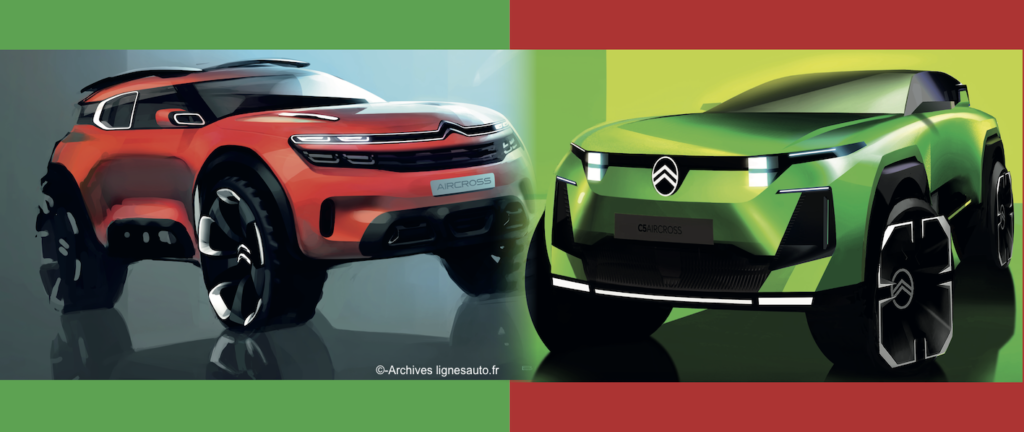
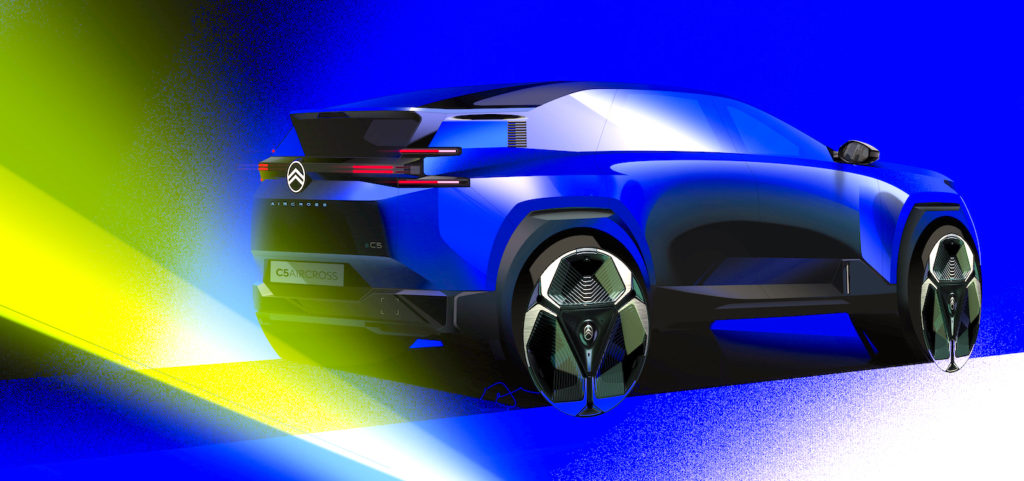
Citroën has just unveiled the production version of its new C5 Aircross above, a new model that was largely spoiled by the concept car revealed at the Paris Motor Show last year. We tend to forget that this compact SUV is a very recent model in the brand’s history. In fact, the manufacturer decided relatively late in the game to enter this segment, which is considered promising in Europe. That was in 2015, just ten years ago, with the “Aircross” concept car shown below. LIGNES/auto takes you behind the scenes of the design of this forced entry into a world that is now familiar to us.

So we need to turn back the clock a little, because the story really began behind the scenes in 2012. That year, the Citroën design center, which had been headed by Thierry Métroz, welcomed a new boss: Alexandre Malval. Thierry Métroz took charge of the DS line, which had clear ambitions in China. Peugeot design was entrusted to Gilles Vidal in 2010, with Jean-Pierre Ploué responsible for the overall design of both brands and the “DS line.”

Since 2012 and his appointment as head of Citroën’s style center, Alexandre Malval has been extremely busy. Working with his teams, he has been involved in the redesign of the brand’s identity and, above all, the design of new products, which is an extremely time-consuming task. The revamps of the C4 Cactus (which will ultimately be a major restyling), the small C3 sedan and its cousin, the C3 Picasso, as well as the future C4 sedan, are part of the brand’s desire to prove its legitimacy in the high-end car segment, with what will become the short-lived C5X below, currently in the clay model stage.
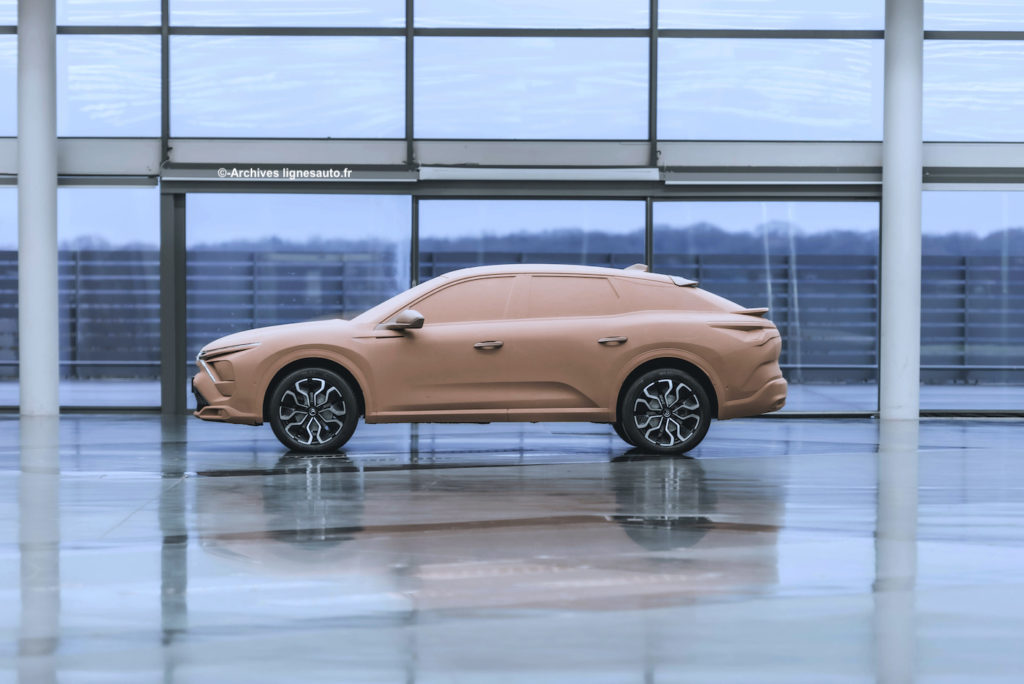
All projects are urgent, because since the split from the “DS line,” the Citroën range has lost a significant portion of its profitability, while the range is aging. The most urgent project is, of course, the small C3, launched in 2002. Designer Cyril Pietton’s project was selected for this program, which will be marketed in 2016. The Citroën C3 Picasso, meanwhile, is destined for a completely different future and will become the C3 Aircross shown below.
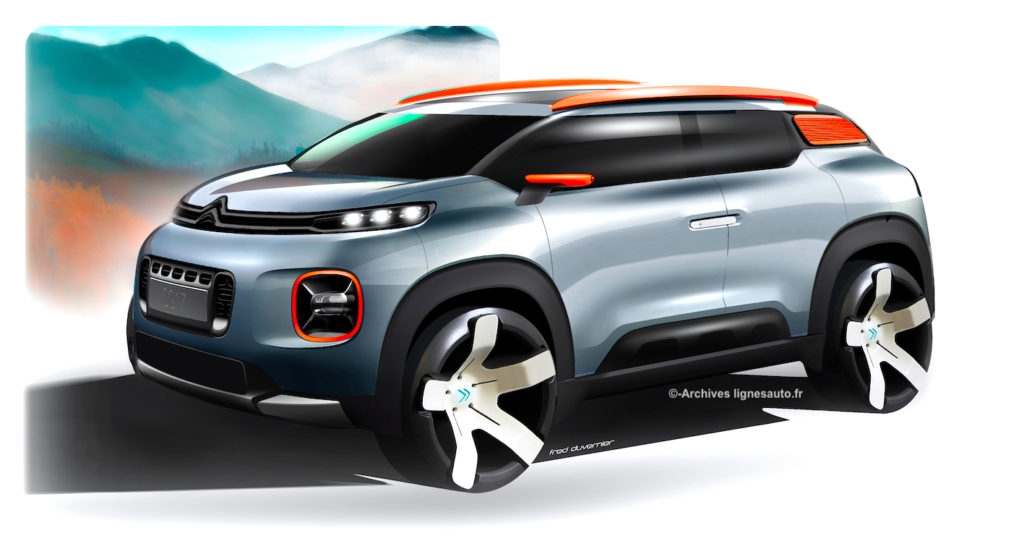
The problem of renewing the C4, launched in 2004 (designed in part by Alexandre Malval but illustrated below by… Gilles Vidal) is more complex. The decision was made to delay its renewal because the PSA Group’s situation was considered worrying. Hit by the crisis at the end of the 2000s, the French group announced on November 20, 2008, that it would be cutting 3,550 jobs.
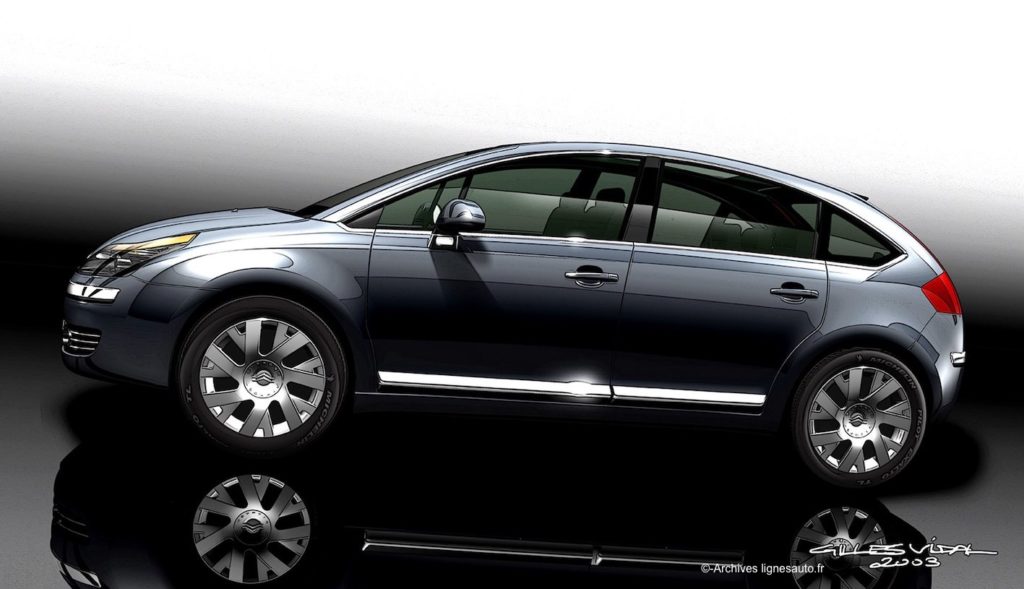
This painful decision comes on top of the nearly 15,000 departures that have taken place since the arrival of new boss Christian Streiff. Ironically, it was Streiff who pushed Peugeot and Citroën’s product plans forward with the development of the 3008, the RCZ coupe (below), and the Citroën DS3. In this tumultuous context, which would continue until the early 2010s, the Cactus had to take on the leading role of a credible offering in the compact sedan segment. The “real” future C4 would have to wait…

Like all car manufacturers around the world, the French group is going through a period of severe turbulence, to such an extent that a persistent rumor is gaining momentum: PSA is about to close a factory, and the Rennes-La-Janais plant on the outskirts of the Breton city is said to be the site in question. Rennes currently produces the C5 and C6 for Citroën. It would take a miracle product to secure the future of this production site. That product is what is not yet known as the C5 Aircross…
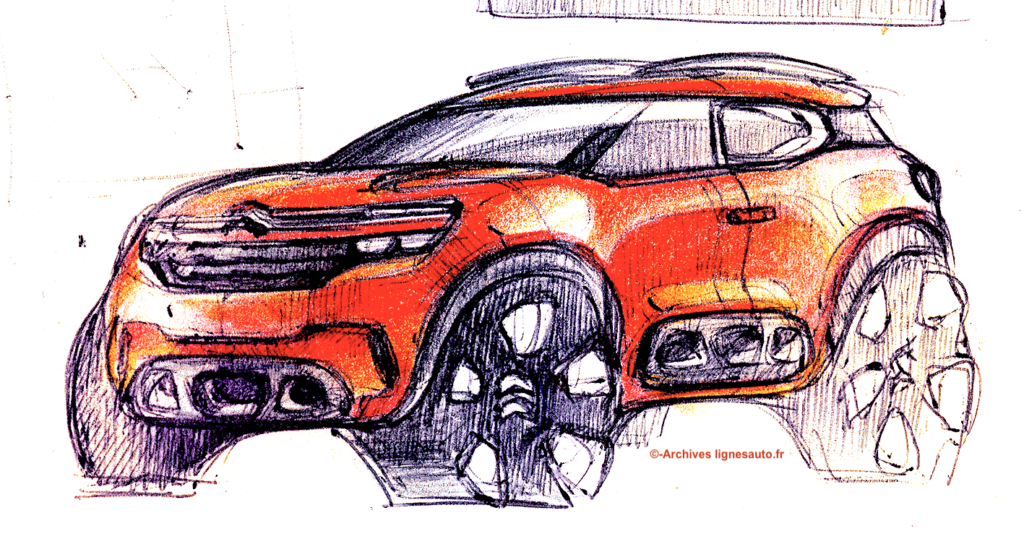
While the large C6 sedan is no longer a priority, the renewal of the C5 sedan is still up for debate. Replacing it as is does not seem to be the solution. It would be preferable to create a brand new vehicle for the Citroën range that would target the booming SUV market. At the time, the C3 study was well underway. A brand new project was therefore set to shake up the order of the renewals in progress. It would be a 4.58 m long SUV, competing with its cousin, the Peugeot 3008, launched in 2009 and due to be renewed in 2016. To carry out all these projects practically in parallel, Alexandre Malval’s team of designers needed to be strengthened.
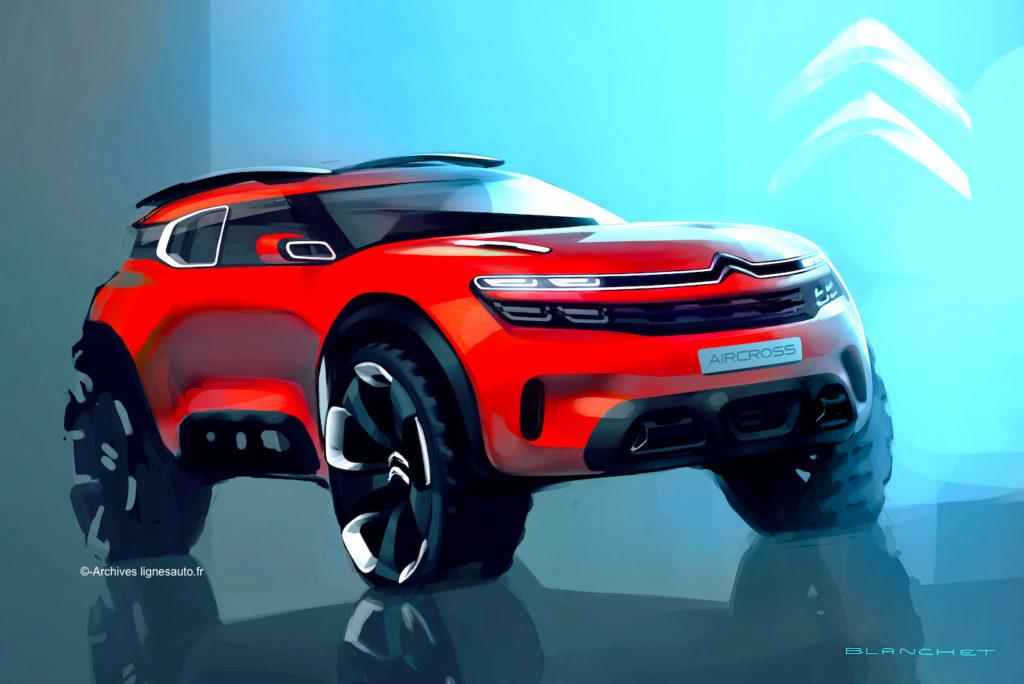
On the other side of the world, in Osaka, Japan, French designer Grégory Blanchet (pictured below) works for Daihatsu Motor Corporation in the city of Ikeda. He joined the Japanese company while still a student in his final year of a master’s degree at Strate.
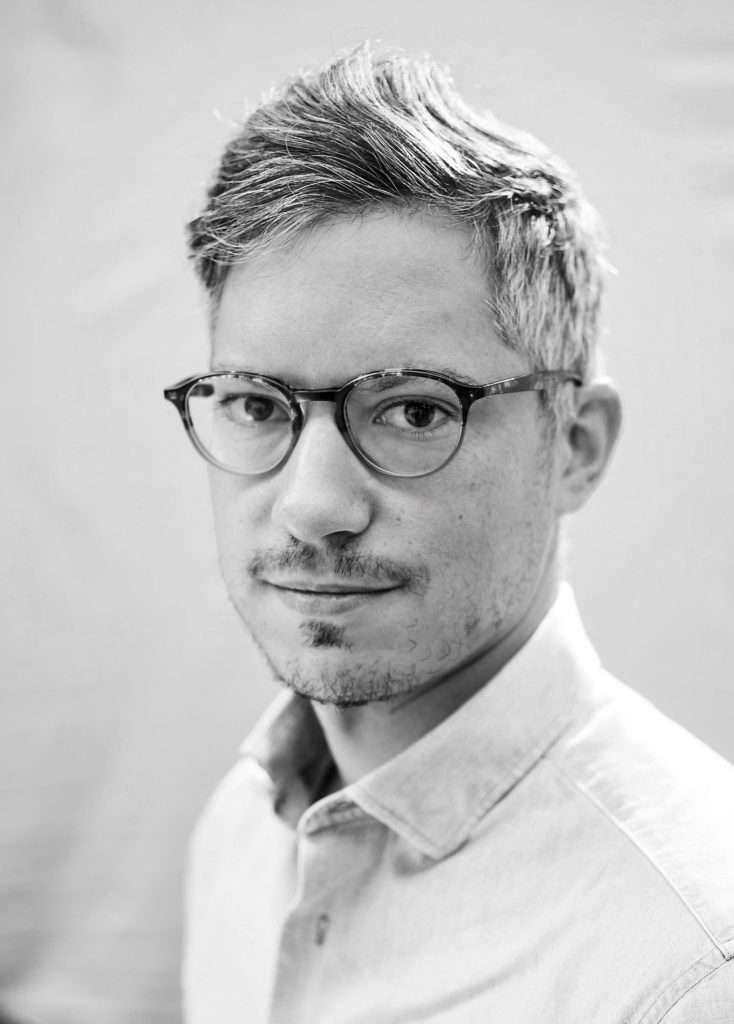
“I had an incredible three months during my internship. It’s a fascinating world. You have to do an internship there because they have a slightly different corporate culture. It’s less individualistic than here in France. They want to make sure you fit in, but they really take care of you! When I came back to France, I still had a year left at Strate. Daihatsu then offered me the chance to finish my studies with them. For a year, I traveled between France and Japan. I did my diploma project there and, after completing my master’s degree, I was hired in Japan for more than seven years, until 2013.”

At Citroën at that time, Numéro 9 had just been unveiled by Thierry Métroz. Grégory Blanchet recalls, “In 2012, Nicolas Beauchamps (designer and cousin of Frédéric Soubirou) called me and said that Alexandre Malval was looking for people and wanted to see my portfolio on his desk on Monday… and it was Friday evening! I didn’t really believe it, because at Daihatsu, we were more used to working with small cars, but I sent my drawings and was hired!” The young French designer, married to a Japanese woman and fluent in Japanese, accustomed to designing cars that could easily be parked in a pocket, arrived at Citroën in February 2013.

It will give rise to the Aircross concept car (2015) above, its production derivative, the C5 Aircross (2017), and the CXperience concept car (2016). All of these cars are very difficult to park in a pocket square! Unusually, the Aircross concept car was designed and manufactured at the same time as the production version. “I won the design competitions for both the concept and the production version, and everything was done at the same time. I worked with one modeler on the concept and another on the production vehicle!” The interior features the skilled and recognized signatures of Jérémy Lebonnois (below right with Alexandre Malval and Jean-Arthur Madelaine-Advenier in front of the CXPerience project), now lead interior designer for future Citroëns, and Raphaël Le Masson, who has since joined Dacia’s interior design team.
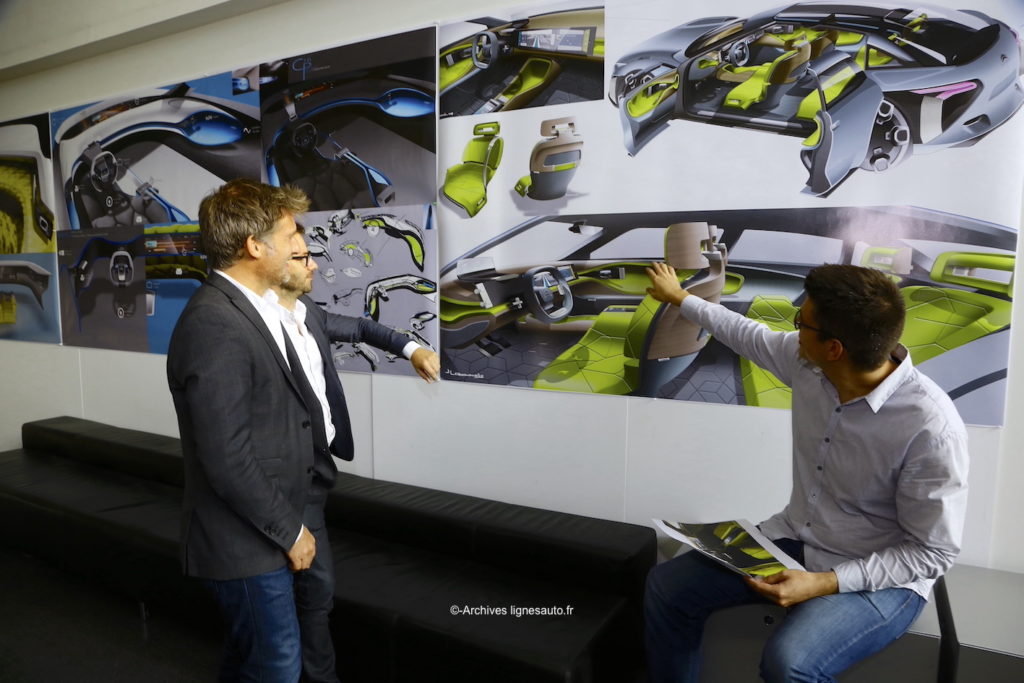
The Aircross concept car cannot therefore be defined as a show car, but rather as a chrysalis from which the production C5 Aircross was born. This concept car breaks with SUV conventions, suggesting both power and determination, and immediately stands out thanks to its color and colorful interior. Its identity is clearly inspired by the trend set by the C4 Cactus, which was launched a year earlier. In fact, the marketing campaign emphasizes this theme by stating that “there is a sequel to the C4 Cactus, and the Aircross concept is a clever demonstration of this.” Paradoxically, it is this concept car, with its reinforced identity, that will drive the design language of all future Citroëns.
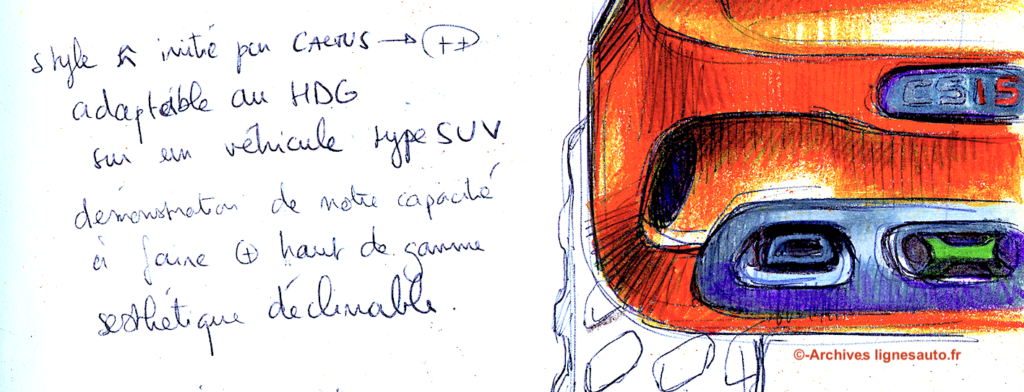
Aircross will first be unveiled in Shanghai, as Citroën really needs a vehicle like this there, and it will be produced in France in 2017. In Rennes-la-Janais, where the second generation (following the restyling of the first) has just gone into production, the new C5 Aircross will go on sale in mid-2025. When the first compact SUV arrived in the Citroën range in 2017, the brand had lost the “DS line,” which had become a separate brand three years earlier, and had also stopped production of the C5 sedan. A new chapter began, this time based on a new team of designers led by Pierre Leclercq, who succeeded Alexandre Malval in 2018.

The French brand is thus enjoying a new lease of life, even though it took several years for Pierre Leclercq’s signature style to shine through in the brand’s designs. With the recent revamp of the C3, C3 Aircross and now the C5 Aircross, the range can count on a modern offering. While the C5 and C6 were recently revamped by Alexandre Malval’s C5X, it is now clear that the glass ceiling for the French range is called the C5 Aircross. While Pierre Leclercq is unable to express himself in the high-end segment, this is not the case for Alexandre Malval, who now heads Mercedes’ advanced design studio in Sophia Antipolis, with a certain Grégory Blanchet at his side.

Read on lignesauto.fr: 60 years of the Renault 16 with previously unpublished documents. Click here: https://lignesauto.fr/?p=38352


